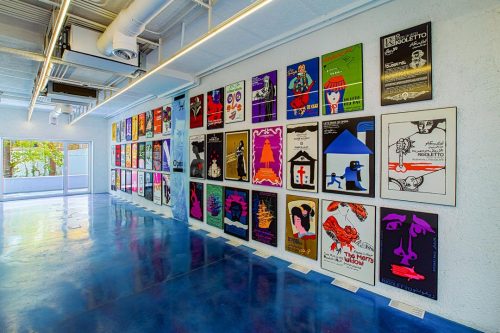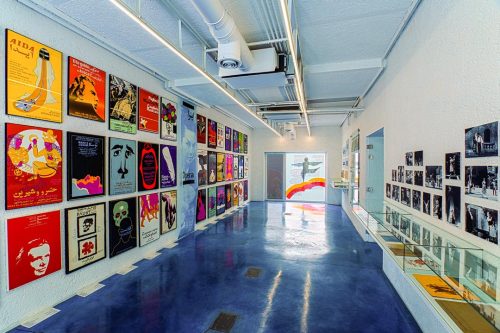
Roudaki Hall
Graphic Design, Architecture and Everything [1967•79]
Aug. 24 - Oct. 5, 2018 |
- Hall A
- Hall B
- Hall C
- Panahgah
We are delighted to announce the opening of Nabshi Center featuring “Roudaki Hall: Graphic, Architecture and Everything” Exhibition and its book launch. The opening reception is on Aug 24, 2018. The exhibition will be on view from Aug 24 to Sep 14, 2018.
“Roudaki Hall” officially opened its doors to performers and audiences fifty-one years ago, with the aim to provide a platform for development of music, performance and theatre in line with Iranian national values, incorporating Western rhythms. Roudaki was a venue for reviving Iranian art and culture through performing arts and introducing Western artists to the public. Roudaki Hall, named after the Iranian poet and minstrel, was the first foundation merely concentrated on fulfilling artistic aims and ideas in the capital of Iran.
“Roudaki Hall: Graphic Design, Architecture, and Everything” is the eighth archival project of StudioKargah. The project was selected and compiled by Aria Kasaei and executed by Ashkan Forootan. It consists of a series of posters, brochures, photographs, movies and documents of Roudaki Hall events from 1965 to 1977. Collecting and presenting this series is an attempt to prevent forgetting and eliminating what is considered the history of our visual culture in that period. Revolving around graphic design and architecture of the Hall with an interdisciplinary approach, this archive will be presented concurrent with the official opening ceremony of Nabshi Center. A panel on graphic design will be held during this event by Behzad Hatam, Reza Abedini and Aria Kasaei.
Nabshi Center and StudioKargah have published related documents to the architect and architecture of the building, posters and brochures of plays and performances in the book “Roudaki Hall: Graphic Design, Architecture and Everything”. The book opens with Dariush Kiaras’s article on cultural sociology of Tehran from 1965 to 1977, discussing Roudaki’s posters through a general look at graphic design of the Hall in five sections: 1- Graphic design of Symphonic Orchestras. 2- Graphic design of Operas. 3- Graphic design of Ballet Dances. 4- Graphic design of Iranian events: commemoration of Iranian music, local and national dances. 5- Graphic design of recitals and chamber music, all of which have been designed and visualized in form of posters and brochures by two graphic designers “Sadegh Barirani” and “Behzad Hatam” during Roudaki events.
When it comes to architecture, the book presents intact narrations about documents and pictures of Roudaki structure, introducing Eugene Aftandilian as the architect along with an analysis of his designs. The technical and administrative documents are too, re-published in this section.
A number of texts are collected and published in the book of “Roudaki Hall: Graphic Design, Architecture, and Everything” including different viewpoints of Dariush Kiaras, Bijan Shafei, Reza Abedini, Kambiz Mousavi Aghdam.












